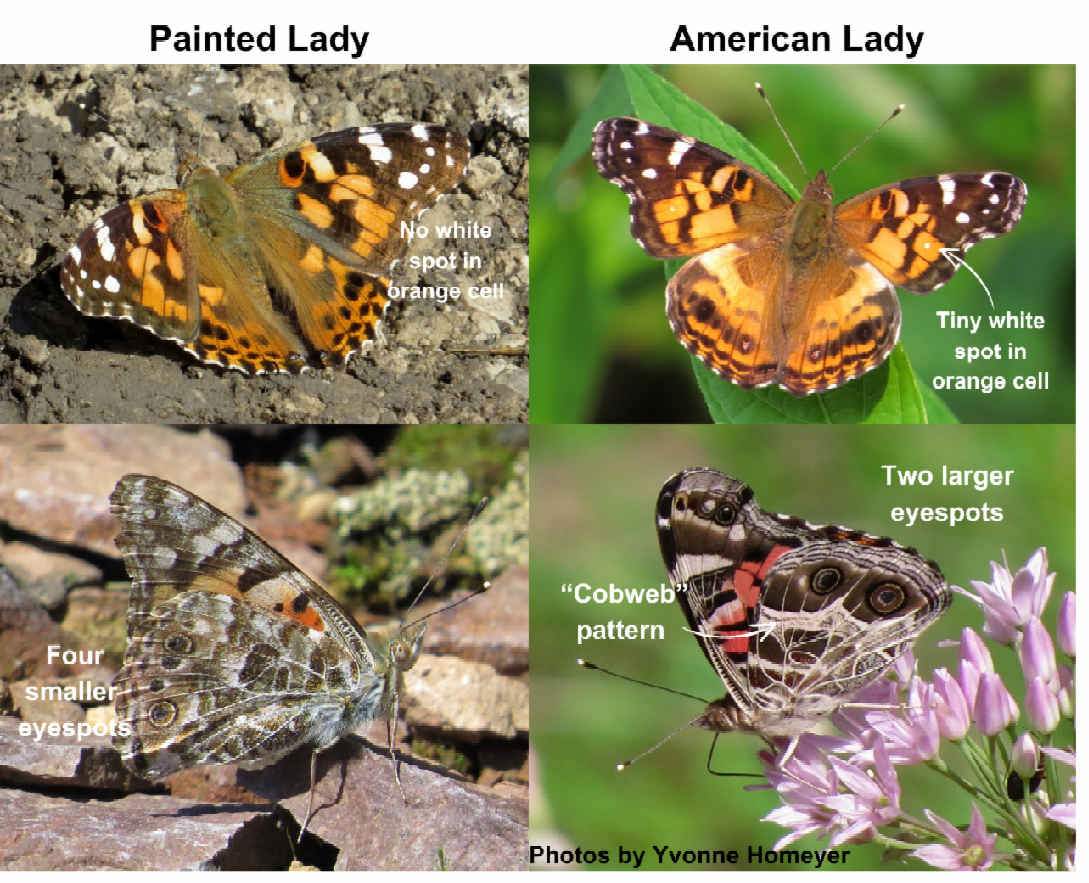The painted lady (Vanessa cardui) and the American lady (Vanessa virginienses) are two native butterflies commonly seen on prairies and other habitats as well as native gardens. Painted lady caterpillars feed on many non-woody, native plants, preferring thistles (Cirsium sp.) and Asteraceae (sunflower or aster family). American lady caterpillars feed on leaves of pussytoes (Antennaria sp.), sweet everlasting (Pseudognaphalium obtusifolium), or other members of the Asteraceae.
These intricately patterned butterflies are similar in size, wing markings, and coloration, which may be quite variable, so they can easily be confused. However, as long as you are close enough to see them, it is usually possible to identify them from either view of the wing—dorsal (back) or ventral (underside).
Similarities:
- Similar size: the painted lady (males and females) has a wingspan of 2 to 2.5 inches and the American lady (males and females) has a wingspan of 1.75 to 2.5 inches.
- Both have orange and black wings and eyespots on the ventral wings.
- Adults of both species are active flyers April through October.
Differences:
The easiest way to tell the two species apart is by looking at the ventral wings: the painted lady has four small eye spots and the American lady has two large eyespots. Also, the American lady has a “cobweb” pattern next to the inner edge of the two eyespots, but the pattern is absent from the painted lady.
If you can’t get a look at the ventral wings, you can tell the two species apart by the dorsal wings, too. The American lady has a tiny white spot within an orange cell of the forewing, toward the outer edge. It is small, but once you know where to look, it is easy to see. It is absent from the painted lady.
Have fun looking for these beautiful butterflies!
Photos above by Yvonne Homeyer.



